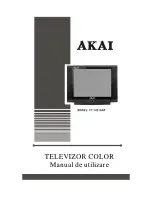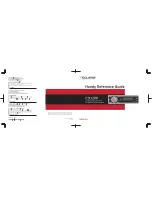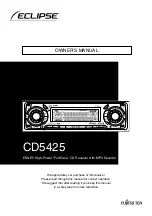
13
If used with a PBX system, 2-Way audio communication
needs bridging resistors. Measure the handset phone
impedance and use a resistor of the same value. A typical
value is 220
Ω
/1 Watt.
If the impedance is incorrect, the handset terminal switchover
will behave as if switching to an on-hook phone, and the
line will be dropped.
Audio Communication Methods
Two methods are available for using the 2-Way Audio Mode:
Alarm type code Method
After the digital alarm data has been received and the
receiver has transmitted the last kissoff, the control panel
will transmit a constant tone of the data transmission
frequency for 500 ms. This signal will activate the 2-Way
Audio Mode.
The receiver compares the alarm type codes in 3/1, 4/1, 4/
2, 4/3, 10-40 BD or DTMF touch-tone formats to the value
programmed in Option [4C]. This is done to determine if
the 2-Way Audio Mode should be activated. This feature is
designed for use with medical signalling systems in areas
where privacy regulations apply.
This method of activation is recommended as it can
distinguish between different types of alarms from the same
panel, and activate the 2-Way Audio Mode only when
needed. Note that Options [49] and [4C] must be
programmed to use this method.
Reserved Account Code Range Method
The first digit of the Account Code is used to activate 2-
Way Audio Mode.
This method is used by some alarm panels and medical
signalling systems. The central station manager can group
these panels into a range of account codes in order to
switch on the 2-Way Audio Mode. The transmission of an
Account Code from any of these panels will trigger the
DRL2A’s 2-Way Audio Mode. Note that Options [49], [4A]
or [4B] must be programmed to use this method.
A combination of the two methods may also be used,
please refer to p.25.
Example:
Reserve a block of account codes, such as
800-9FF (for 3-digit formats) or 7000 - 8FFF ( for 4-digit
formats) for panels which can communicate in 2-Way Audio.
Audio Mode Operation
When in Audio Mode, the “Audio” light will be ON and this
message will be displayed:
-L01 Digital Rec
-L01 Digital Rec
-L01 Digital Rec
-L01 Digital Rec
-L01 Digital Rec
TWO WAY AUDIO ON
TWO WAY AUDIO ON
TWO WAY AUDIO ON
TWO WAY AUDIO ON
TWO WAY AUDIO ON
The DRL2A buzzer can be used to indicate Audio Mode
operation by programming Option [3E] MUTE BUZZER as
“02”. To silence the buzzer, press the [ACK] button.
Select Option [4D] to have a message indicating Audio
Mode operation sent to the printer and the computer.
For example, use the character “P” (for “phone”) to represent
Audio Mode operation. Program Option [4D] as “50” (the
ASCII code for “P” is 50). When Audio Mode operation has
begun, the following messages will be sent to the printer
and computer:
Printer:
“L01-0000-P01 AudioLine1”
Computer:
“0000 P 01”
• “L01” indicates Line Card 01
• “0000” used as the account code for internal signals
• “P” is the character programmed in Option [4D]; “01”
again is the Line Card number
2-Way Audio Mode operation may be manually cancelled
by pressing the [CANCEL] button. If not manually cancelled,
Audio Mode operation will automatically be cancelled when
the time programmed in Option [49] expires.
The Audio Mode may also be cancelled remotely through
the Ring Simulation input on the back of the receiver. Future
central station audio management equipment will be able
to use this input to hang up the line and put the receiver
in Stand-By Mode when the operator’s telephone is hung
up.
To disable the 2-Way Audio Mode feature, program Option
[49] as “00”.
An output is also available on the SG-DML2A module (TXPG1
and TXPG2) which may be used to indicate activation of
Audio Mode operation or to indicate which telephone line
should be picked up for audio operation.
For more details, please refer to the programmable options
section.
















































